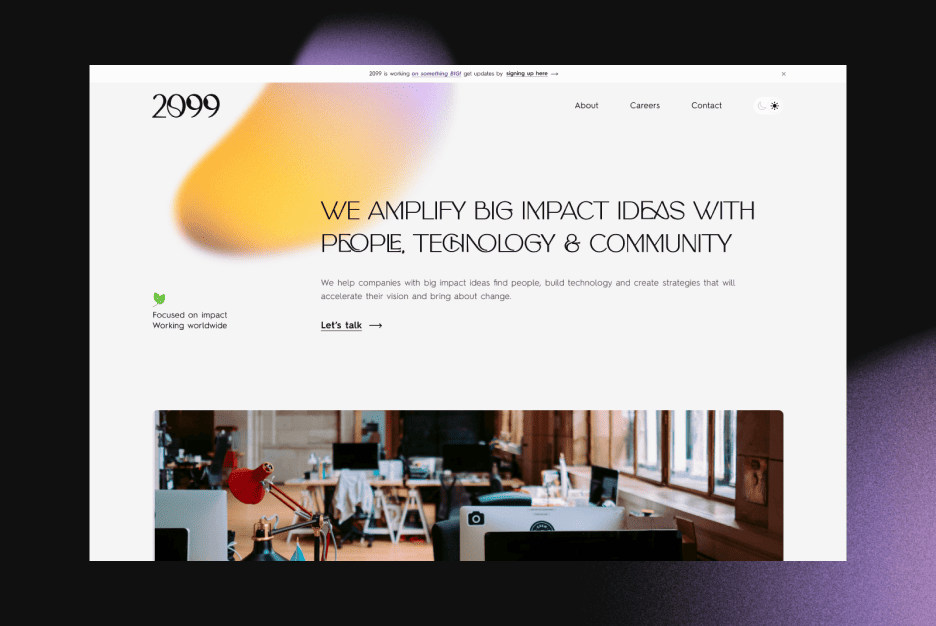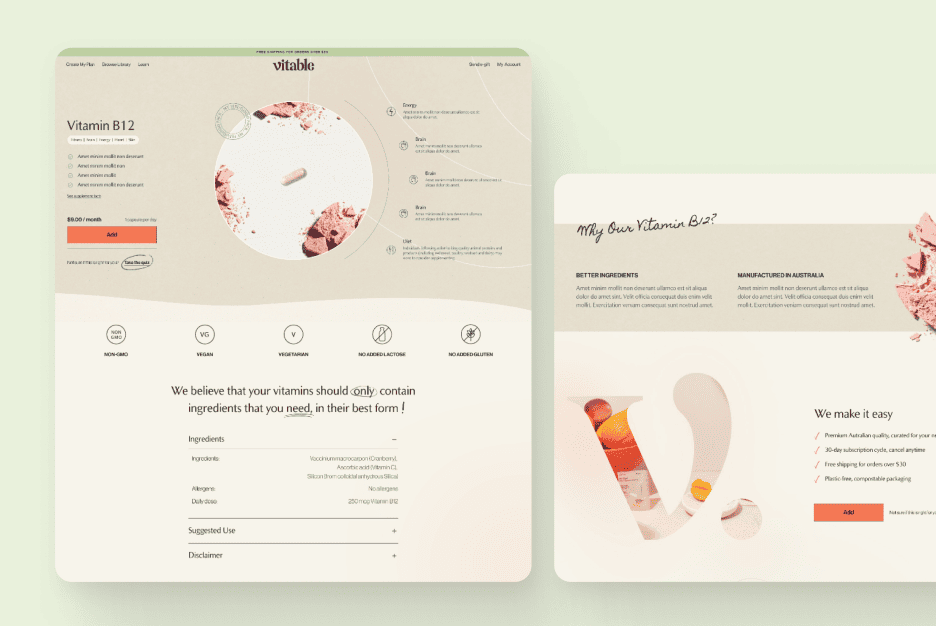The Importance of Evaluating a Design for Your Website
Did you know that 94% of first impressions are design-related? This staggering statistic underscores the crucial role of website design in shaping user perceptions and determining your online success. Evaluating a design for your website is a critical process that ensures your site not only looks good but also functions effectively and meets user expectations. At Almax, we emphasize the importance of regular design evaluations to enhance your website’s performance, user experience, and overall success. This blog post will explore why evaluating a design matters, the key benefits of regular assessments, and the steps to conduct an effective design evaluation.
Why Evaluating a Design for Your Website Matters
Evaluating a design is more than just a superficial exercise focused on aesthetics. It involves a comprehensive assessment of how well your website performs, how it meets the needs of your users, and how it aligns with your business objectives. A thorough design evaluation helps you identify strengths and weaknesses, enabling you to make informed decisions that enhance user satisfaction, boost engagement, and drive conversions. By regularly assessing your website’s design, you can ensure it remains relevant, efficient, and aligned with industry standards.

Key Benefits of Regularly Assessing Your Website’s Design
Improved User Experience
One of the most significant benefits of evaluating your website’s design is the improvement of user experience (UX). A well-designed website is intuitive, easy to navigate, and user-friendly. On the other hand, bad UX can significantly dissuade users from visiting a site or purchasing services.
Regular evaluations help you identify areas where users might face difficulties, allowing you to make necessary adjustments. Enhancing UX can lead to reduced bounce rates, increased time on site, and a more positive perception of your brand, ultimately fostering customer loyalty.
Enhanced SEO Performance
Design evaluation also plays a crucial role in search engine optimization (SEO). Search engines favor websites that are mobile-friendly, fast-loading, and easy to navigate. By regularly assessing and optimizing your design, you can address these factors, improving your search engine rankings and increasing your website’s visibility. This not only attracts more visitors but also ensures that your site is accessible to a broader audience.
Increased Conversion Rates
Another key benefit of regular design evaluations is the potential to increase conversion rates. By identifying and fixing elements that may hinder conversions—such as confusing navigation, poor call-to-action placements, or cumbersome checkout processes—you can streamline the user journey and make it easier for visitors to complete desired actions. This can lead to higher sales, more leads, and greater overall business success.
Staying Current with Design Trends
Web design trends evolve rapidly, and staying current is essential for maintaining a modern and relevant online presence. Regularly assessing your design allows you to update your website in line with the latest trends and best practices. This can positively impact your brand image, making your site more appealing and engaging to users.
Early Detection of Issues
Routine design evaluations enable you to detect and address potential issues before they become significant problems. Whether it’s a broken link, a slow-loading page, or an outdated plugin, catching these issues early prevents user frustration and potential loss of business. This proactive approach ensures your website remains functional and effective.
Competitive Advantage
A superior website design can give you a competitive edge in the market. By continuously improving your design, you can attract and retain more customers, differentiating your business from competitors who may neglect regular assessments. A well-maintained website can be a powerful tool in your overall marketing strategy.

How to Conduct an Effective Website Design Evaluation
1. Define Your Goals and Objectives
The first step in conducting an effective website design evaluation is to define your goals and objectives. Understand why you are conducting the evaluation—are you looking to improve user experience, enhance SEO performance, increase conversion rates, or achieve something else? Clear, measurable objectives will guide your evaluation process and help you measure success.
2. Gather Data
Collecting data is crucial for a thorough evaluation. Use tools like Google Analytics to gather information on user behavior, page load times, bounce rates, and conversion rates. Heatmaps from tools like Hotjar or Crazy Egg can provide visual insights into how users interact with your site, showing you where they click and how they navigate. Additionally, gather user feedback through surveys, interviews, or user testing to understand their satisfaction and pain points.
3. Evaluate User Experience (UX)
Assessing user experience involves examining various aspects of your website. Evaluate the ease of navigation—are menus intuitive? Can users find information quickly? Check for consistency in design elements such as colors, fonts, and buttons to ensure a cohesive look and feel. Assess readability by checking if the text is easy to read, with appropriate font sizes, line spacing, and contrast. Finally, test your site on various devices to ensure it performs well on smartphones and tablets, providing a seamless experience across all platforms.

4. Analyze SEO Performance
SEO performance is critical for driving organic traffic to your site. Evaluate on-page SEO elements like title tags, meta descriptions, header tags, and keyword usage to ensure they are optimized. Check for technical SEO issues such as broken links, crawl errors, and site speed using tools like Google Search Console. Additionally, ensure that your content is high-quality, relevant, and updated regularly to keep search engines and users engaged.
5. Conduct Usability Testing
Usability testing involves having users perform specific tasks on your website and observing their experience. Task-based testing can reveal how easily users can find a product, complete a purchase, or locate information. A/B testing allows you to compare different versions of a webpage to see which performs better in terms of user engagement and conversions. These tests provide valuable insights into how real users interact with your site, highlighting areas for improvement.
6. Review Design and Visual Appeal
Aesthetics play a significant role in user perception. Evaluate the overall look and feel of your website to ensure it is visually appealing and aligned with your brand identity. Check the quality of images to ensure they are high-resolution and relevant to your content. Assess the layout for clutter and visual hierarchy, making sure important elements stand out, and the design is clean and organized.
7. Check Accessibility
Ensuring your website meets accessibility standards is essential for accommodating users with disabilities and broadening your audience. Use tools like WAVE or Axe to identify and fix accessibility issues, ensuring your site is usable for everyone. This includes providing alternative text for images, using appropriate color contrast, and ensuring keyboard navigability.
8. Assess Security
Website security is crucial for protecting user data and building trust with your audience. Ensure your site uses HTTPS to encrypt data and safeguard user information. Keep all software, plugins, and themes up to date to prevent vulnerabilities. Conduct regular security audits and vulnerability assessments to identify and address potential risks.
9. Compile Findings and Make Recommendations
Document all findings from your evaluation in a detailed report. Prioritize issues based on their impact on user experience and business goals. Develop an action plan with specific steps to address the identified problems, ensuring a clear path to improvement.
10. Implement Changes and Monitor Results
Implement the recommended changes and improvements to your website design. Continuously monitor the impact of these changes using analytics and user feedback. Regularly repeat the evaluation process to ensure ongoing optimization and improvement, keeping your website effective and aligned with your goals.

The Impact of Website Design Quality on User Experience and Engagement
The quality of your website design directly influences user experience and engagement. A high-quality design enhances usability, making it easier for users to find information and complete desired actions. This leads to higher satisfaction, longer visit durations, and increased loyalty. Investing in design quality not only improves user experience but also builds trust and credibility with your audience. Users are more likely to return to a site that offers a seamless, enjoyable experience, making design quality a critical factor in your website’s success.
Common Mistakes to Avoid When Evaluating a Design for Your Website
- Neglecting Mobile Responsiveness: Ensure your design works well on all devices, providing a seamless experience for mobile users.
- Ignoring User Feedback: Listen to your users; their insights are invaluable for understanding their needs and improving your design.
- Overlooking Accessibility: Make your site accessible to everyone, including users with disabilities, by adhering to accessibility standards.
- Failing to Prioritize Issues: Address the most critical issues first to see the greatest impact and avoid overwhelming your team with too many changes at once.
- Not Monitoring Results: Continuously track the performance of implemented changes to ensure ongoing improvement and adjust your strategy as needed.

At Almax Agency, we emphasize the importance of evaluating a design to maintain a high-performing website. By following these guidelines and regularly assessing your website’s design, you can ensure it remains effective, engaging, and aligned with your business objectives.
What to Do When Your Website Needs to Improve Its Design Quality
When your website’s design quality falls short, it can negatively impact user experience, SEO performance, and conversion rates. It’s crucial to address these issues promptly and effectively. Partnering with a professional design service agency like Almax Agency can provide the expertise and resources needed to revamp your site. Our team of skilled designers and developers specializes in creating visually appealing, user-friendly, and SEO-optimized websites. By signing up for our services, you’ll benefit from a comprehensive design evaluation, tailored recommendations, and ongoing support to ensure your website not only meets but exceeds industry standards. Don’t let a subpar design hold your business back—contact Almax today to elevate your online presence and drive success.











